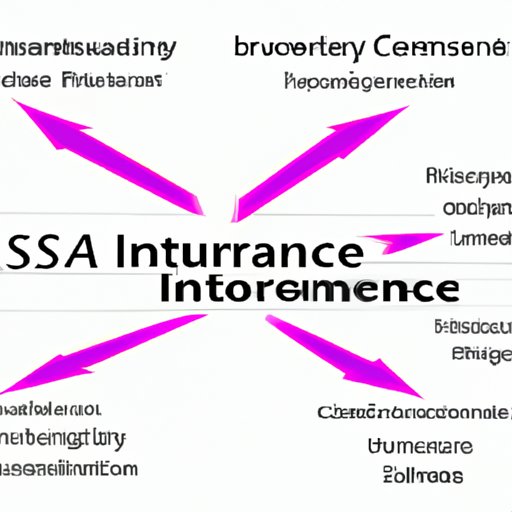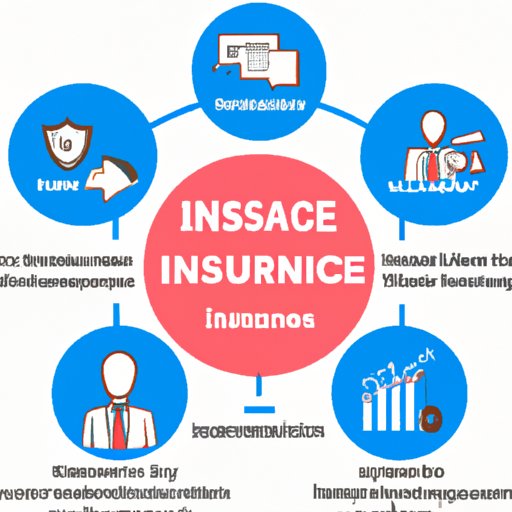Introduction
Information assurance and cybersecurity are two terms that are often used interchangeably. However, it’s important to understand the nuances between them. In general, information assurance refers to the practice of protecting data from unauthorized access or manipulation, while cybersecurity focuses on protecting computer systems from malicious attacks. This article will explore what these two concepts entail, including the roles and responsibilities of professionals in the field, common types of threats, and best practices for implementing secure systems.

An Overview of Information Assurance and Cybersecurity
Before diving into the specifics of information assurance and cybersecurity, it’s important to understand the basic differences between them. While they are related, they have distinct roles in protecting data and systems.
What is Information Assurance?
Information assurance (IA) is a practice that focuses on protecting data from unauthorized access or manipulation. It is primarily concerned with ensuring that data is managed and stored securely, and that access to it is limited to authorized users. IA includes activities such as validating user credentials, encrypting data, and maintaining audit logs. It also involves measures such as implementing security policies and procedures, training users on data security, and developing incident response plans.
What is Cybersecurity?
Cybersecurity is a practice that focuses on protecting computer systems from malicious attacks. It involves activities such as patching software vulnerabilities, monitoring network traffic, and implementing firewalls. Cybersecurity also includes measures such as using antivirus software, conducting penetration tests, and educating users on cyber hygiene. The goal of cybersecurity is to detect, prevent, and respond to cyberattacks.

Exploring the Roles and Responsibilities of Information Assurance and Cybersecurity Professionals
Given the complexity of information assurance and cybersecurity, there are many different roles and responsibilities associated with these fields. Below, we’ll take a look at the roles of an information assurance professional and a cybersecurity professional, as well as some of the common responsibilities shared by both.
The Role of an Information Assurance Professional
An information assurance professional is responsible for ensuring the confidentiality, integrity, and availability of data. They work to protect data from unauthorized access or manipulation, and ensure that only authorized users have access to it. Information assurance professionals are also tasked with implementing security policies and procedures, as well as monitoring access to sensitive data. Additionally, they must develop incident response plans and regularly train users on data security.
The Role of a Cybersecurity Professional
A cybersecurity professional is responsible for protecting computer systems from malicious attacks. This includes activities such as patching software vulnerabilities, monitoring network traffic, and implementing firewalls. Cybersecurity professionals must also use antivirus software, conduct penetration tests, and educate users on cyber hygiene. Additionally, they must be able to detect, prevent, and respond to cyberattacks.
Common Responsibilities of Both Professionals
While information assurance and cybersecurity professionals have distinct roles, they share some common responsibilities. For example, both are responsible for identifying and assessing risks, as well as developing strategies to mitigate those risks. Additionally, they must both be knowledgeable about the latest security technologies and trends, and be able to communicate effectively with stakeholders.

Understanding the Different Types of Threats in Information Assurance and Cybersecurity
In order to protect data and systems, it’s important to understand the different types of threats that exist. Below, we’ll take a look at some of the most common threats in information assurance and cybersecurity.
Malware
Malware is a type of malicious software designed to damage or disrupt a system. It can be used to steal data, delete files, or even take control of a system. Common examples of malware include viruses, worms, Trojans, and ransomware.
Phishing
Phishing is a type of social engineering attack that uses deception to gain access to sensitive information. Attackers typically send emails or messages pretending to be from legitimate organizations in an attempt to trick victims into providing confidential data. It is important to be aware of the warning signs of phishing emails, such as misspelled words, generic greetings, and suspicious links.
Social Engineering
Social engineering is a type of attack that exploits human psychology to gain access to sensitive information. Attackers will typically use deceptive tactics such as impersonation, pretexting, and tailgating to manipulate victims into revealing confidential data. It is important to be aware of the warning signs of social engineering attacks, such as requests for personal information or requests to bypass security protocols.
Denial-of-Service Attacks
A denial-of-service (DoS) attack is a type of attack that attempts to make a system or network unavailable to its intended users. Attackers typically use techniques such as flooding a server with requests or exploiting vulnerabilities to overwhelm the system and prevent access. It is important to be aware of the warning signs of a DoS attack, such as slow performance or unusual network activity.
Examining Best Practices for Implementing Secure Systems
In order to protect data and systems, it’s important to implement best practices for security. Below, we’ll take a look at some of the most effective measures for protecting data and systems.
Risk Management
Risk management is the process of identifying, assessing, and mitigating risks to data and systems. It involves activities such as evaluating potential threats, assessing the likelihood of those threats, and developing strategies to reduce the risk of those threats. Risk management is an essential part of any security strategy.
Authentication Methods
Authentication methods are used to verify a user’s identity before granting access to a system or network. Common authentication methods include passwords, multi-factor authentication, biometrics, and tokens. It is important to use strong authentication methods to ensure that only authorized users can access sensitive data.
Encryption
Encryption is the process of converting data into a form that is unreadable to unauthorized users. It is an effective measure for protecting data from unauthorized access or manipulation. Encryption can be implemented in various ways, such as symmetric encryption, asymmetric encryption, and hashing.
Patch Management
Patch management is the process of identifying, testing, and deploying patches for software vulnerabilities. It is important to regularly patch software to ensure that systems are up-to-date and secure. Additionally, it is important to test patches before deploying them to ensure that they do not introduce new vulnerabilities.
A Look at the Future of Information Assurance and Cybersecurity
As technology continues to evolve, so too does the need for information assurance and cybersecurity. Below, we’ll take a look at some of the emerging technologies and growing cyberthreats that will shape the future of these fields.
Emerging Technologies
New technologies such as artificial intelligence (AI), machine learning (ML), and the Internet of Things (IoT) are revolutionizing the way we interact with data and systems. As these technologies become more commonplace, the need for information assurance and cybersecurity professionals who can protect these systems will continue to grow.
Growing Cyberthreats
As technology evolves, so do the tactics used by attackers. New threats such as automated attacks, zero-day exploits, and cloud-based attacks are becoming increasingly common. It is important for information assurance and cybersecurity professionals to stay up-to-date on the latest threats and best practices for defending against them.
Increasing Need for Cybersecurity Professionals
As organizations continue to rely more heavily on digital systems, the need for qualified cybersecurity professionals is on the rise. There is a growing demand for professionals who can identify, assess, and mitigate cyberthreats. Additionally, organizations are increasingly looking for professionals who can help them develop secure systems and protect their data.
Conclusion
Information assurance and cybersecurity are two distinct but related fields that play an important role in protecting data and systems. Understanding the roles and responsibilities of professionals in these fields, as well as the different types of threats and best practices for implementing secure systems, is essential for safeguarding data and systems. As technology evolves, so too does the need for qualified professionals who can defend against emerging threats and develop secure systems.
(Note: Is this article not meeting your expectations? Do you have knowledge or insights to share? Unlock new opportunities and expand your reach by joining our authors team. Click Registration to join us and share your expertise with our readers.)
